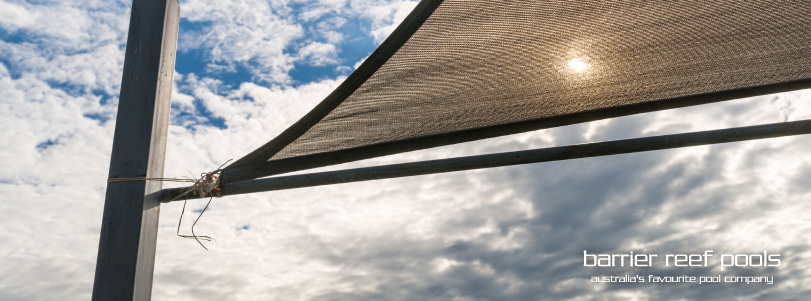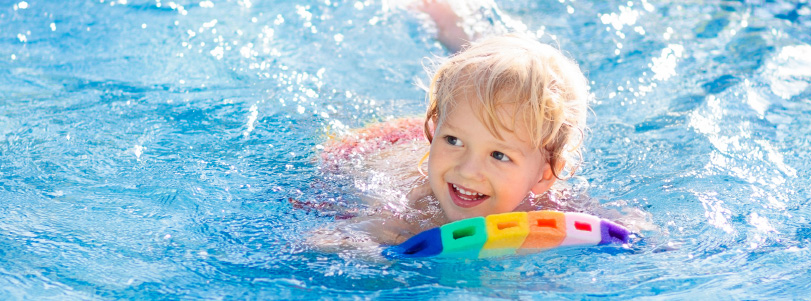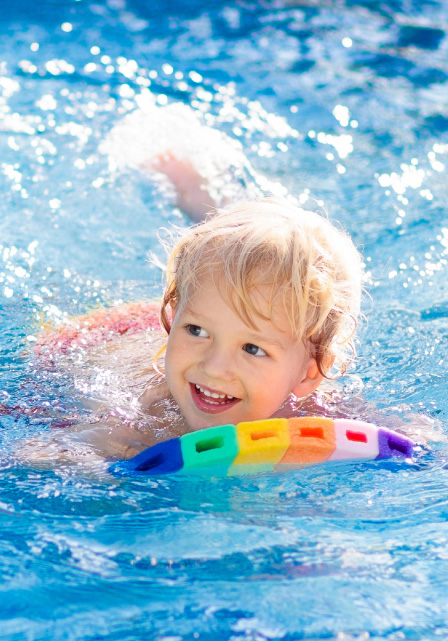Swimming Pool Interior Surface Finish
Choose Wisely!
If you're thinking of adding a fibreglass pool to your home, you may be wondering about what kind of finish you should get. When it comes to pool design, your choice regarding the pool finish will be extremely important. The choice you make will affect the overall aesthetics of your swimming pool. It will also affect its durability as well as how much your fibreglass pool will cost overall. Through this guide, you'll be able to learn what the most common pool finishes are, as well as what features they have.

1. Plaster finishes
One of the most common and oldest finishes used for interior pools is plaster. Plaster finishes usually combine concrete with sand. Water is also added to this mixture, and then the mixture is applied to the pool’s cavity. What you get as a result is a pool finish that looks classy. What you’ll get is a finish that is sturdy, waterproof, as well as capable of withstanding concentrations of chemicals that are added to the pool. These chemicals have the ability to destroy the surface of your pool, but not if you opt for a plaster finish.
In case you find yourself working on a budget, then getting a plaster finish can be a great idea. Available in a price range that is affordable, the resulting plaster pool finish that you get is very durable. It can last between five to seven years. After that, you can expect signs of chipping as well as etching to emerge.
Fibreglass pools with a plaster finish also have an easy installation process. You’ll even get to choose between various colour options. Keep in mind, however, that if you have family members or friends with sensitive skin, then this pool finish may bother them. This is because they may find the rough surface of such pools irritating on their skin. You’ll also need to clean your pool frequently if you choose to get a plaster finish.
With a pool with a plaster finish, you’ll need to clean it often. These kinds of pools have a low resistance to algae, meaning that you’ll need to clean them more often.
2. Aggregate finish
Going up from standard plaster, the next level when it comes to pool finishes includes aggregate finishes. In this kind of finish, water is mixed together with sand as well as solid concrete. It can then be ornamented using pebbles, glass beads that are coloured, quartz, and even river stones. With an aggregate finish for your pool, you can either get a smooth texture, also known as polished aggregates, or a bumpy texture. The bumpy texture of such pools is known as exposed aggregates.
When it comes to what this kind of finish costs, it tends to be more expensive than plaster finishes. However, this kind of pool finish has a larger lifespan. It can last for up to seven years. If you use pebbles in your pool finish, then it can last for up to twenty years. Since you’ll probably be using your pool for decades to come, check out these upgrades to save you money, time and energy.
This kind of pool finish also has a natural resistance to algae. This means that you’ll need to clean it less. This makes it easier to maintain such pools compared to concrete surfaces.

The main drawback you should know about is the finish of exposed aggregate pool surfaces. This is because walking on such a surface can be difficult. Over the long run, you may need to deal with calcium buildup as well. You may want to avoid such downsides as well. If that’s the case, then what you should opt for is a finish of polished aggregate. Compared to standard plaster, any kind of aggregate finish that you choose will be more aesthetically pleasing.
3. Tile finish
Tile finishes are the most durable option you can opt for, but they are also the most expensive. There are many pool owners who opt for this kind of pool finish, despite how much it costs. This is because swimming pool tile finishes require the least amount of maintenance.
You’ll also get greater options when it comes to your pool design, size, quality, texture, and even shape. There are three types of pool finishes that you can choose from when it comes to tile finishes. They include:
- Ceramic tiles, which are the most common among pool owners.
- Stone tiles, which can provide a look that is more natural.
- Quartz tiles, which are made by combining quartz with pigment as well as white cement.

In Queensland as well as the Gold Coast, most people opt for ceramic tiles for their fibreglass pools. This is because ceramic tiles are the cheapest option of the three, and you’ll also have access to various colour options.
Stone tiles tend to be pricier. However, you’ll be able to give your fibreglass pool a more natural look. Quartz tiles are even more expensive but can make your pool area look more aesthetically pleasing. The price isn’t the only issue that you’ll need to deal with. This is as installing tile finishes takes longer as well. At the end of the day, however, you’ll find that the price is worth it. Tile finishes are durable and can last for many years to come.
There is a slight possibility that either chips or cracks may develop, but that wouldn’t be too big of a deal. This is as replacing tiles isn’t hard, and isn’t that expensive either. Once you’ve had your tiles installed, you don’t have to worry about replacing them for years to come.
A tile finish looks visually appealing, is safe to use, and can add to your property value as well. If you’re looking for a pool finish that can provide you with the greatest return for what you’ve invested into it, then look no further than tile finishes.
Conclusion
For your fibreglass pool, there are various kinds of pool finishes that you can choose from. From tile finishes to aggregate finishes, this guide details the most common options available to you. Use this guide to learn more about what pool finishes are, as well as what kind of pool finish would best suit your fibreglass pool.
Swimming Pool Interior Surface Finish
Choose Wisely!
If you're thinking of adding a fibreglass pool to your home, you may be wondering about what kind of finish you should get. When it comes to pool design, your choice regarding the pool finish will be extremely important. The choice you make will affect the overall aesthetics of your swimming pool. It will also affect its durability as well as how much your fibreglass pool will cost overall. Through this guide, you'll be able to learn what the most common pool finishes are, as well as what features they have.

1. Plaster finishes
One of the most common and oldest finishes used for interior pools is plaster. Plaster finishes usually combine concrete with sand. Water is also added to this mixture, and then the mixture is applied to the pool’s cavity. What you get as a result is a pool finish that looks classy. What you’ll get is a finish that is sturdy, waterproof, as well as capable of withstanding concentrations of chemicals that are added to the pool. These chemicals have the ability to destroy the surface of your pool, but not if you opt for a plaster finish.
In case you find yourself working on a budget, then getting a plaster finish can be a great idea. Available in a price range that is affordable, the resulting plaster pool finish that you get is very durable. It can last between five to seven years. After that, you can expect signs of chipping as well as etching to emerge.
Fibreglass pools with a plaster finish also have an easy installation process. You’ll even get to choose between various colour options. Keep in mind, however, that if you have family members or friends with sensitive skin, then this pool finish may bother them. This is because they may find the rough surface of such pools irritating on their skin. You’ll also need to clean your pool frequently if you choose to get a plaster finish.
With a pool with a plaster finish, you’ll need to clean it often. These kinds of pools have a low resistance to algae, meaning that you’ll need to clean them more often.
2. Aggregate finish
Going up from standard plaster, the next level when it comes to pool finishes includes aggregate finishes. In this kind of finish, water is mixed together with sand as well as solid concrete. It can then be ornamented using pebbles, glass beads that are coloured, quartz, and even river stones. With an aggregate finish for your pool, you can either get a smooth texture, also known as polished aggregates, or a bumpy texture. The bumpy texture of such pools is known as exposed aggregates.
When it comes to what this kind of finish costs, it tends to be more expensive than plaster finishes. However, this kind of pool finish has a larger lifespan. It can last for up to seven years. If you use pebbles in your pool finish, then it can last for up to twenty years. Since you’ll probably be using your pool for decades to come, check out these upgrades to save you money, time and energy.
This kind of pool finish also has a natural resistance to algae. This means that you’ll need to clean it less. This makes it easier to maintain such pools compared to concrete surfaces.

The main drawback you should know about is the finish of exposed aggregate pool surfaces. This is because walking on such a surface can be difficult. Over the long run, you may need to deal with calcium buildup as well. You may want to avoid such downsides as well. If that’s the case, then what you should opt for is a finish of polished aggregate. Compared to standard plaster, any kind of aggregate finish that you choose will be more aesthetically pleasing.
3. Tile finish
Tile finishes are the most durable option you can opt for, but they are also the most expensive. There are many pool owners who opt for this kind of pool finish, despite how much it costs. This is because swimming pool tile finishes require the least amount of maintenance.
You’ll also get greater options when it comes to your pool design, size, quality, texture, and even shape. There are three types of pool finishes that you can choose from when it comes to tile finishes. They include:
- Ceramic tiles, which are the most common among pool owners.
- Stone tiles, which can provide a look that is more natural.
- Quartz tiles, which are made by combining quartz with pigment as well as white cement.

In Queensland as well as the Gold Coast, most people opt for ceramic tiles for their fibreglass pools. This is because ceramic tiles are the cheapest option of the three, and you’ll also have access to various colour options.
Stone tiles tend to be pricier. However, you’ll be able to give your fibreglass pool a more natural look. Quartz tiles are even more expensive but can make your pool area look more aesthetically pleasing. The price isn’t the only issue that you’ll need to deal with. This is as installing tile finishes takes longer as well. At the end of the day, however, you’ll find that the price is worth it. Tile finishes are durable and can last for many years to come.
There is a slight possibility that either chips or cracks may develop, but that wouldn’t be too big of a deal. This is as replacing tiles isn’t hard, and isn’t that expensive either. Once you’ve had your tiles installed, you don’t have to worry about replacing them for years to come.
A tile finish looks visually appealing, is safe to use, and can add to your property value as well. If you’re looking for a pool finish that can provide you with the greatest return for what you’ve invested into it, then look no further than tile finishes.
Conclusion
For your fibreglass pool, there are various kinds of pool finishes that you can choose from. From tile finishes to aggregate finishes, this guide details the most common options available to you. Use this guide to learn more about what pool finishes are, as well as what kind of pool finish would best suit your fibreglass pool.


